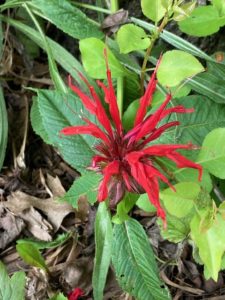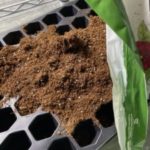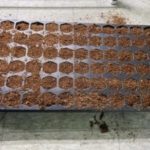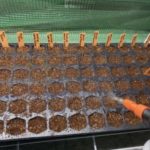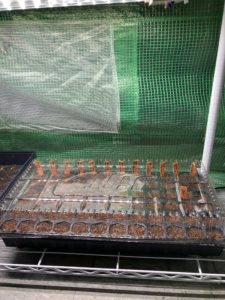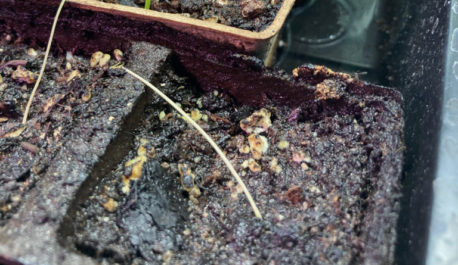
Struggling Seedlings
Don’t worry, many of the seedlings are doing quite well! But there have been a few that started strong and quickly wilted. There has also been an issue of bugs becoming increasingly present in the seedling nursery, and until very recently I didn’t realize that these two issues are a bit connected.
Dropping off: the issue of seedlings sprouting well, growing a bit and then suddenly wilting down to the soil’s surface, still green until they eventually just shrivel and die. If you lift one of the seedlings up, you may even find an area of the stem near the base, browning, caving in and breaking off.
The issue? Fungus in the soil getting into the stem and separating the upper sprout from its roots. For an individual sprout, it’s not survivable. For it’s neighbors, there’s also a risk of spreading, which only time will tell.
The solutions?
- Have good air circulation around the plants. I’ve added an oscillating fan, on low, in the seedling area to just keep the air moving
- Using fresh or sterilized soil to avoid the fungus, if it was present previously.
- Avoid over-watering and keeping the soil too moist, because this will encourage the fungus to grow. I’ve found that slightly older sprouts (getting true leaves, although perhaps only older by a matter of days) like to send roots deep and are satisfied being watered from below, not at the soil’s surface
It’s not yet clear the connection between the dropping off fungus and the fungus gnats, but I do suspect they’re related. Not only do they come up from similar conditions, they also seem to cause similar issues for the seedlings. Whether it is the fungus and moisture that attract the bugs, or the bugs that spread the sprout-killing fungus, we’re going to work on beating both, and maybe even learning how to prevent the issues for future rounds of sprouts.

